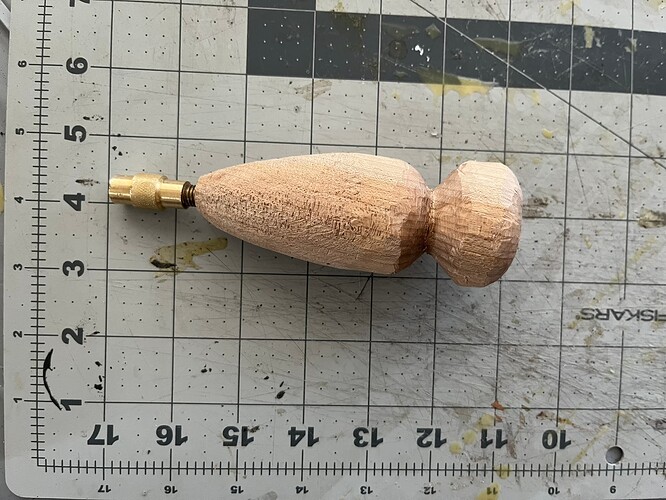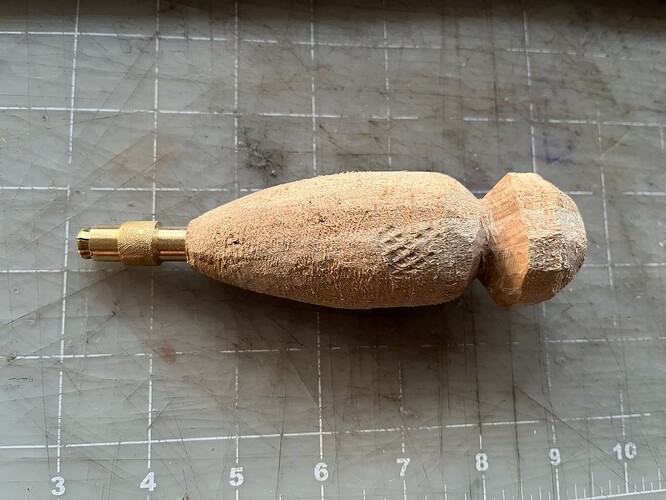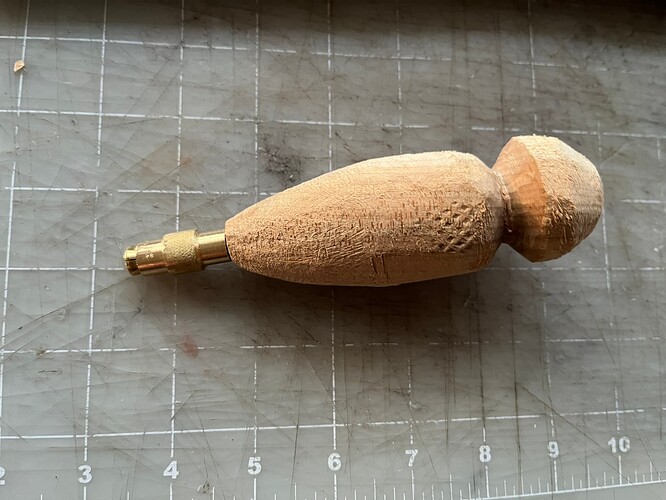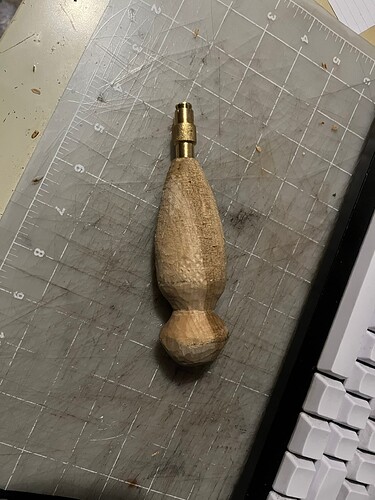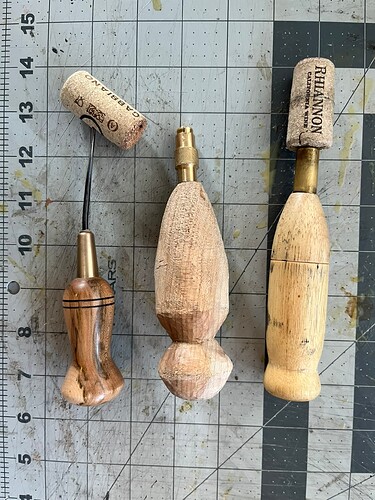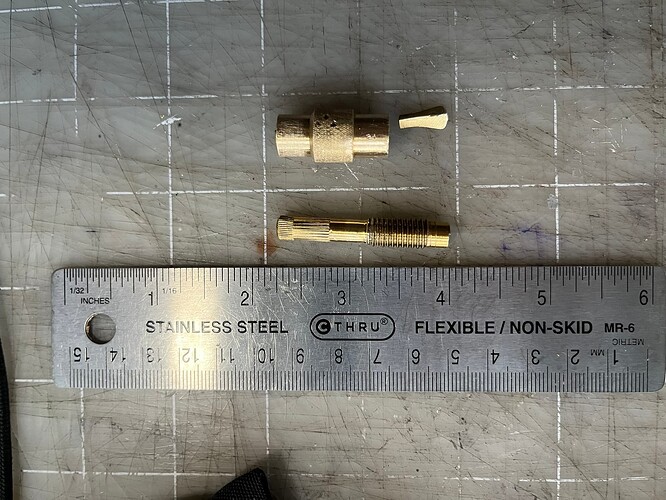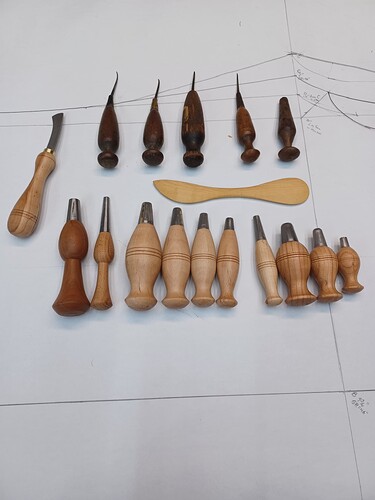I’d been ogling inseaming and outseaming awls online when I realized I had some turning-blank-sized scraps of hard maple left over from my ongoing attempt to carve a last out of wood. If I wanted to try one of the larger hafts I’d seen, I could just make one. And that would also give me a chance to get to know how some of the woodworking tools I have behave on hard maple, which I’ve never worked before.
Here it was at my first stopping point. I scavenged the brass chuck out of a CS Osborne #928 sewing awl haft, drilled a hole for a tight interference fit, and whacked it in with a mallet.
I did the shaping with basically all the tools I have, since half the point was to try them. There was also one new tool, a Shinto brand rasp made in Japan, that I can strongly recommend.
My blank wasn’t square, but if you start from a turning blank or a chair leg blank, the obvious approach would be to mark an octagon that circumscribes the diameter you want, bring the sides down, then cut the corners. I just did it by eye and by feel.
Here’s an earlier stage of it compared to a Dick Anderson size extra large and an old Tandy screw-shoulder haft.
Here’s the effect of just a few minutes working with coarse emery cloth. I do recommend cloth. It seems to hold up better working curves like this.
This finish feels great for working. I mostly wanted to make sure that it wouldn’t be a terrible chore to get the appearance a bit cleaner. I could easily work this up through more grits, but for now I’d rather leave it ready for me to keep dialing in the shape.
The haft is out because I broke it trying to open the jaws wide enough to chuck in an old drill bit.
In case you’d like to know what the brass chuck of an Osborne #928 looks like.
The unthreaded shank is 1/4" in diameter and 7/8" long. The threads are an American standard—I can’t remember now which one, offhand. It fit some nuts I had in my miscellaneous hardware store fasteners box.
Those came in handy getting the chuck back out: thread a nut down until it spins below the threads, thread another on to the same point, and so on, until the chuck is fully withdrawn.
The other mistake I made was probably drilling and tapping the chuck’s shank in too deep. The knurled collar needs to be able to back down far enough so the entire tapered shoulder of each jaw of the collet is fully exposed. I didn’t, and shenanigans that ensured to try to get the jaws to open wide enough bent and broke one off at its root.
For now, I think I’ll tap in a 1/4" hardwood dowel with some glue and redrill a pilot hole to friction-fit a blade.
The good news is that I’m very happy with the feel of the haft in my hand. I have relatively large but slim hands with long, spindly fingers. A bit like my feet, I suppose. So I’d never had a haft that filled my palm.
I’m also learning to appreciate the design with the rear pommel that I’ve seen so many times in photos. It nestles nicely between the two pads of the palm, near the wrist. With a quick shift in the hand, I can move it up so it’s dead-center of my palm, if I need to put a bit more pushing power in line with the blade.
